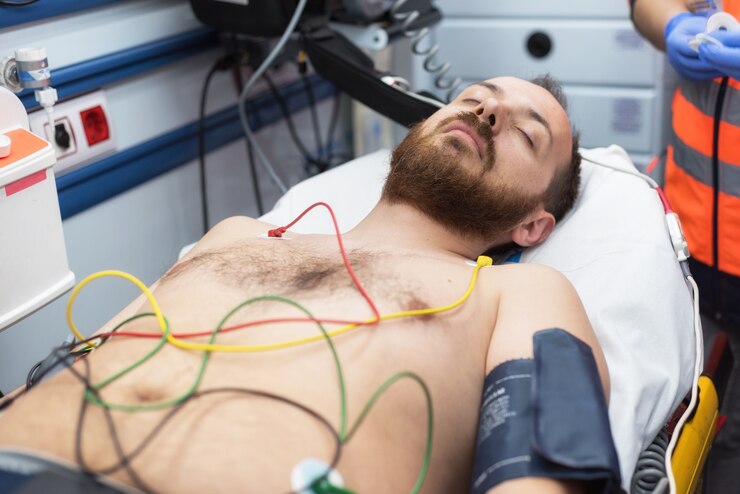convergent ablationis a complex operation that has reformed the treatment of specific heart arrhythmias, especially atrial fibrillation (AF). This strategy includes the union of two particular removal procedures: endocardial and epicardial. Through this methodology, clinicians can really target and kill unusual electrical signs inside the heart, reestablishing typical cadence and working on tolerant results. In this far reaching article, we dive into the complexities of joined removal, its system, advantages, limits, and future possibilities.
Grasping Atrial Fibrillation:
Prior to digging into joined convergent ablation, it’s urgent to get a handle on the basic condition it expects to treat: atrial fibrillation. AF is the most widely recognized supported heart arrhythmia, portrayed by quick and unpredictable electrical driving forces in the atria, convergent ablation prompting insufficient atrial constrictions. This outcomes in side effects like palpitations, windedness, weakness, and can incline patients toward stroke and cardiovascular breakdown.

Convergent ablation Treatment Approaches:
All things considered, AF the board depended on pharmacotherapy to control side effects and lessen stroke risk. Notwithstanding, for some patients, prescriptions alone might be lacking, requiring mediations to reestablish typical musicality. Customary methodologies incorporate catheter-based endocardial removal, which targets electrical triggers inside the heart’s chambers. While powerful for some, this strategy may not address all arrhythmia substrates, especially those starting from the epicardium.

The Idea of Union:
convergent ablation addresses a change in perspective in AF treatment by consolidating endocardial and epicardial approaches. This intermingling profits by the qualities of the two methods while alleviating their singular constraints. Endocardial removal, performed transvenously, Convergent ablation focuses on the inward covering of the heart chambers, while epicardial removal gets to the external surface through negligibly obtrusive careful procedures. By combining these systems, clinicians can accomplish more complete injury sets and further develop treatment viability.
Technique Outline:
The Convergent ablation method regularly includes a multidisciplinary group of electrophysiologists and cardiothoracic specialists working cooperatively. Introductory advances might incorporate endocardial planning to recognize arrhythmia sources followed by careful epicardial access. Whenever access is acquired, energy sources like radiofrequency or cryotherapy are applied to make sores on both endocardial and epicardial surfaces. This far reaching injury set upsets strange electrical pathways, reestablishing typical conduction.

Advantages of Concurrent Removal:
Convergent ablation offers a few benefits over customary methodologies. By focusing on both endocardial and epicardial substrates, it tends to a more extensive scope of arrhythmia components, possibly further developing procedural achievement rates. Furthermore, the joined methodology considers exact sore arrangement, lessening the gamble of difficulties, for example, esophageal injury or phrenic nerve harm related with epicardial removal alone. Moreover, merged removal might be especially useful for patients with intricate or longstanding AF, offering a reasonable treatment choice where different techniques have fizzled.
Constraints and Contemplations:
Regardless of its commitment, Convergent ablation isn’t without impediments. The methodology requires particular gear and mastery, restricting its accessibility to choose focuses with experienced groups. Furthermore, while starting examinations have exhibited promising results, long haul information on adequacy and wellbeing are as yet advancing. Patient choice is basic, and further examination is expected to distinguish the ideal contender for this methodology. In addition, cost contemplations and potential protection inclusion issues might present obstructions to boundless reception.

Future Bearings:
As innovation advances and involvement in united removal develops, the strategy is ready to assume an undeniably noticeable part in AF the board. Progressing research means to refine patient determination rules, upgrade procedural strategies, and improve results. Novel energy sources and catheter plans might additionally further develop injury solidness and procedural productivity. Moreover, endeavors to extend admittance to Convergent ablation through preparing projects and coordinated effort among electrophysiologists and specialists are in progress.
United removal addresses a promising headway convergent ablation in the treatment of atrial fibrillation, offering a complete way to deal with beat control. By blending endocardial and epicardial systems, this procedure tends to the impediments of conventional methodologies and grows the helpful choices accessible to patients with AF. While challenges stay, progressing research and clinical experience proceed to refine and advance joined removal, preparing for further developed results and improved personal satisfaction for people living with this normal arrhythmia.
Read More Articles breath-of-stress-air

